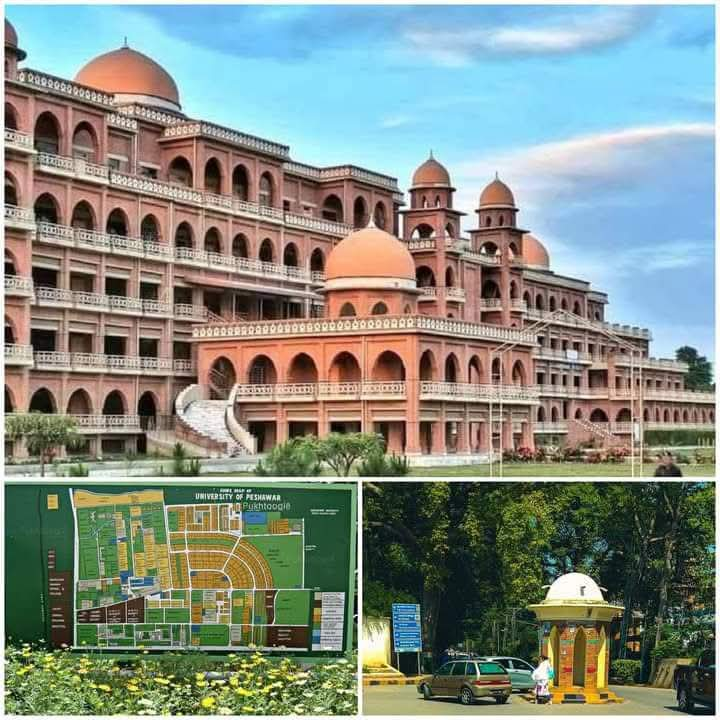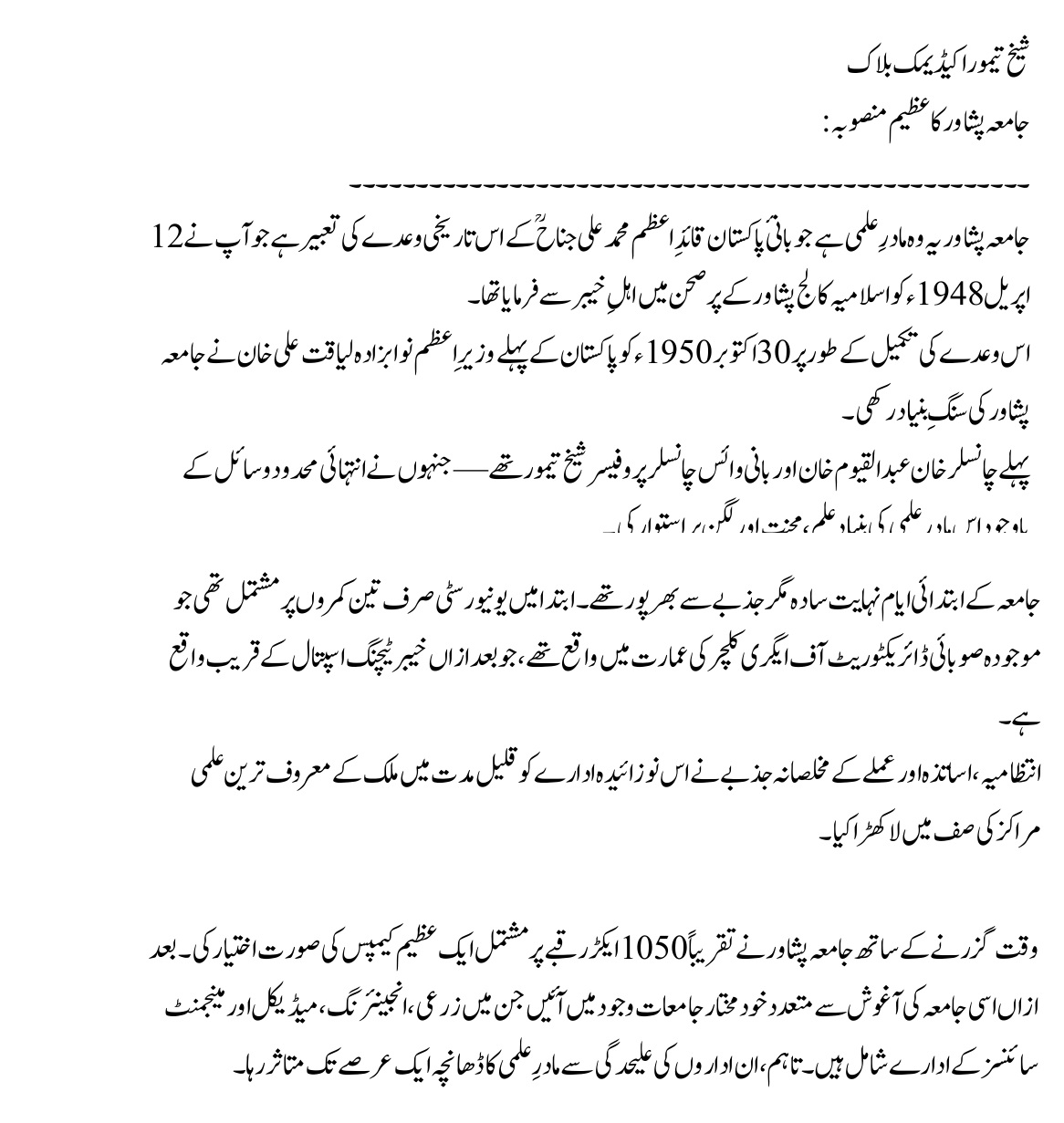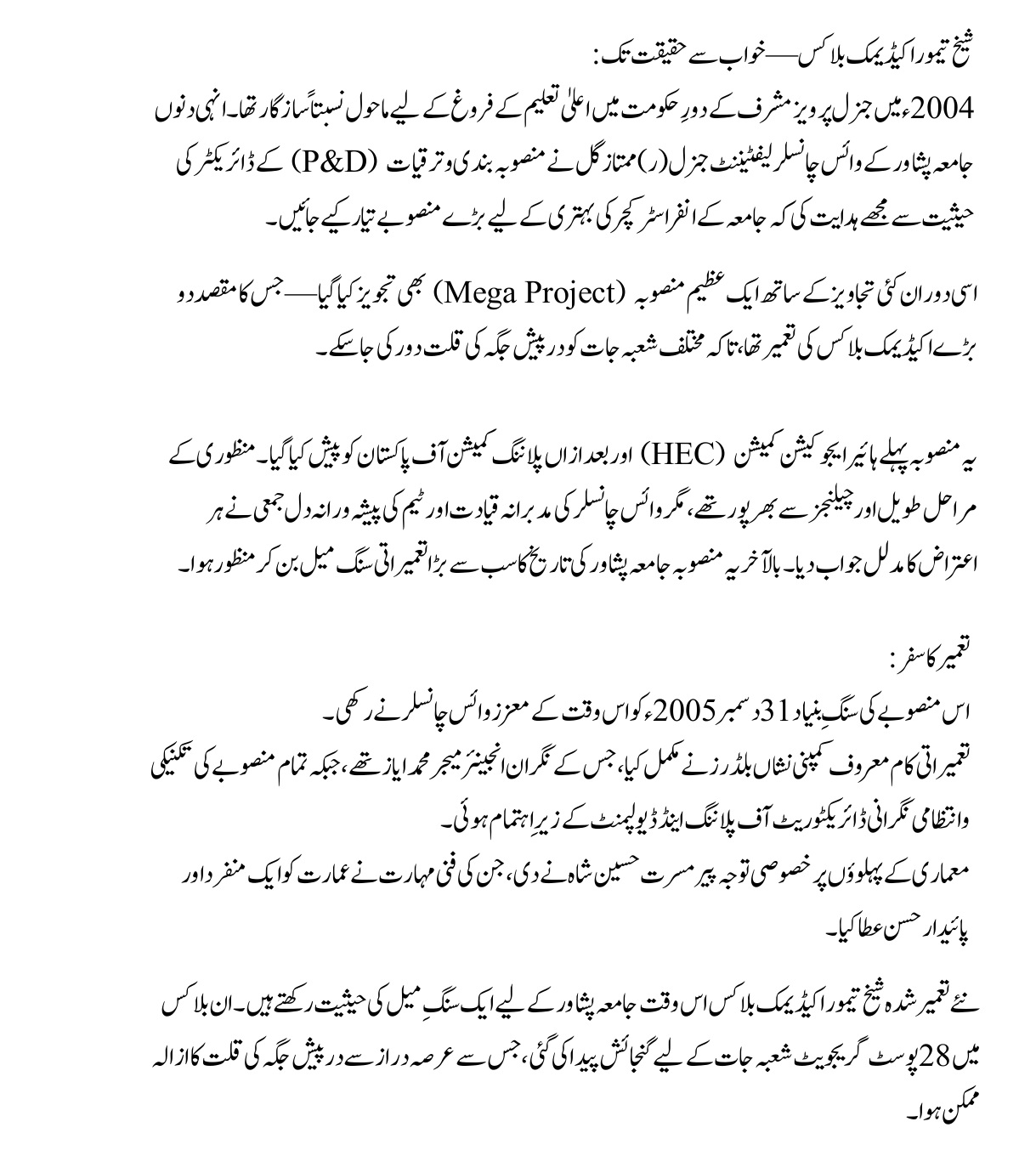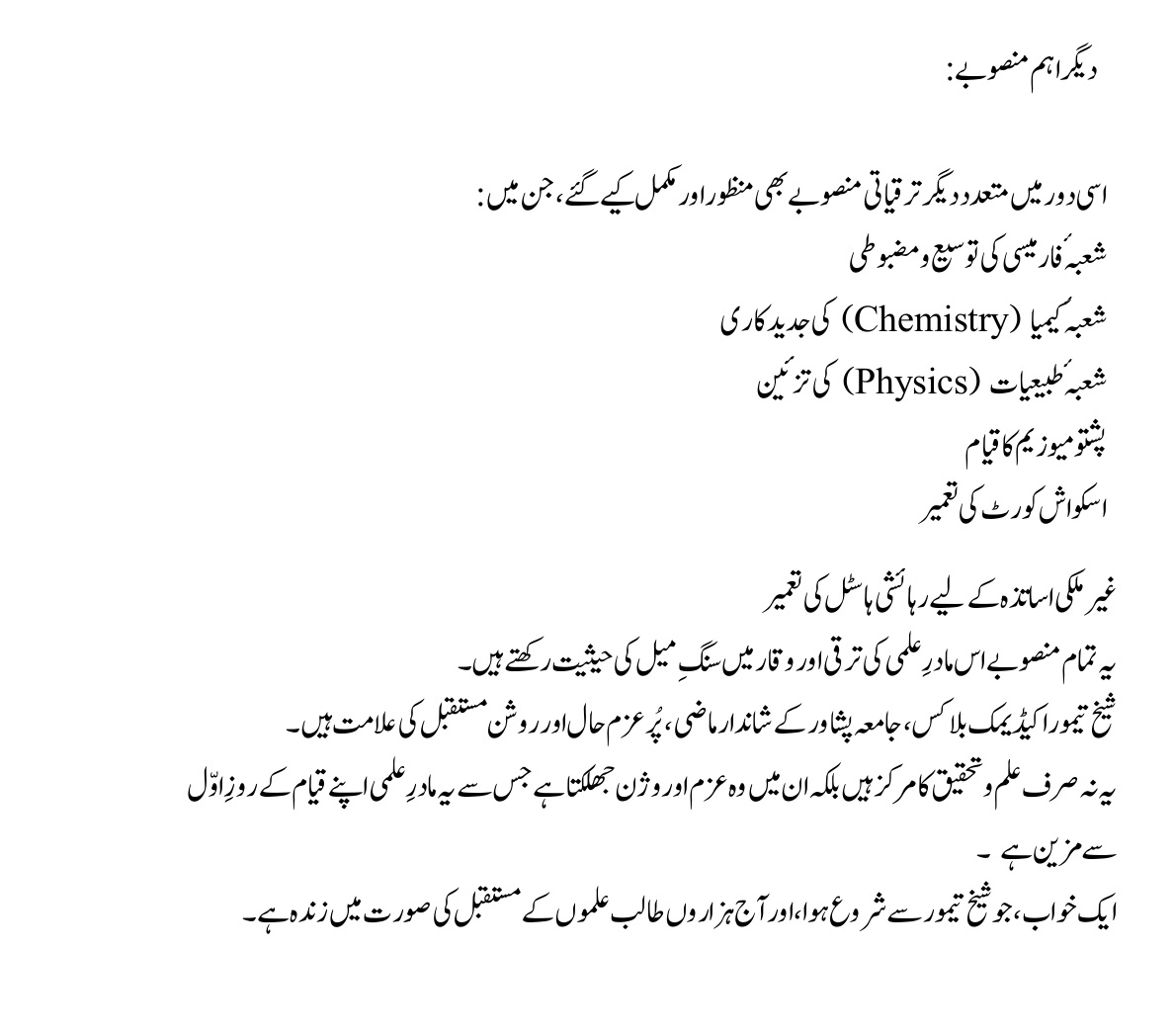75 Years of Celebrations
Opening of Peshawar University in 1950
A close up of the front of Peshawar University, Pakistan. The Prime Minister shakes hands with a scholar. A foundation stone commemorating the Prime Minister Dr Liaquat Ali Khan opening the university in 1950. A line of state officials walk past one of the university halls.
Source: Huntley Film Archives
https://www.facebook.com/share/19sCCrq4V4/





Upgradation of ICP / Establishment of Khyber University (1913-1950)
The vision of transforming Islamia College, Peshawar, into a university traces back to its very inception. The idea matured through decades of deliberation, vision, and perseverance - eventually shaping the academic destiny of the Frontier Province.
1913: The Vision Foretold
At the opening of the Collegiate School in April 1913, Sir Harcourt Butler, Education Member of the Government of India, prophetically declared that “in the fullness of time our institution might develop into a University.” This statement became the guiding star for Islamia College, defining its future as a seat of higher learning for the Frontier people.
1919: The Idea Formally Voiced
On December 12, 1919, during the welcome address to Sir Hamilton Grant, Chief Commissioner of the N.W.F.P., Sir Abdul Qaiyum highlighted the College’s steady progress and voiced the hope that, with government support, the institution would soon blossom into one of the leading teaching universities of India.
1926: The Governors’ Resolution
In March 1926, the Board of Governors of Darul-Ulum Islamia College formally urged the Honorary Secretary, Sir Abdul Qaiyum, to initiate steps toward elevating the College to the status of a university. Pending this achievement, they demanded that Islamia College be represented on the governing bodies of Punjab University.
1928: Advocacy Before the Simon Commission
When Sir John Simon and members of the Statutory Committee visited Peshawar in November 1928, the Alumni Association presented an impressive case for a separate university. They emphasized that Islamia College, with its magnificent buildings, science laboratories, hostels, and academic reputation, already possessed the nucleus of a university. They sought independence from Punjab University, which had become too vast to cater to the unique needs of the Frontier.
1933: Anderson’s Endorsement
The Anderson Report (1933) on the working of Punjab University recognized its excessive burden and inefficiency. Sir George Anderson wrote to Sir Abdul Qaiyum, suggesting that Islamia College should be developed as a Frontier University of the residential type, much like Khalsa College, Amritsar. Later, an inspection committee affirmed that both institutions were capable of evolving into full-fledged universities in the near future.
1934: The University Committee
In October 1934, Sir Abdul Qaiyum, then Minister for Transferred Subjects, directed Mr. Holdsworth to constitute a committee to examine the system of higher education in the Frontier and to recommend a framework for establishing a separate university.
The Committee Members were:
1. Dr. Omar H. Malik (President)
2. Mr. S.M. Timur
3. Mr. E. Wilkinson
4. Mr. Shah Alam Khan
5. Mr. Ahmad Ali Sadiq (Secretary)
Co-opted Members: Col. Noel and Mr. T.C. Orgill (DPI, NWFP)
Between October and December 1934, the Committee held five meetings and unanimously agreed that Punjab University was too unwieldy to serve the academic needs of the Frontier Province. They recommended the establishment of a separate, independent, unitary, and residential university, one that would not only impart modern education but also preserve the region’s moral and religious values. The proposed name for this institution was “Khyber University.”
The Committee’s Recommendations (1934–35)
The report envisioned a university offering a broad spectrum of disciplines -- Arts, Sciences, Agriculture, Islamic Studies, Law, Medicine, Engineering, Teaching, and Commerce. It emphasized the need for a religious and moral dimension in education and proposed the training of teachers, physicians, and scholars to serve both the settled districts and the tribal areas.
The Committee estimated:
Recurring expenses: Rs. 5,01,913 per annum
Income: Rs. 2,25,000
Non-recurring expenses: Rs. 6,10,000
Library allocation: Rs. 1,00,000
The report was submitted in January 1935, but regrettably, it was returned by the government without comments.
1936: Legislative Council Debate
On March 18, 1936, Pir Bakhsh, Member of the Legislative Council, moved a resolution recommending that the Punjab University be relieved of control over higher education in the Frontier Province.
During the debate, Mr. T.C. Orgill, Director of Public Instruction, revealed that a strong case for a separate university had already been submitted. Sir Abdul Qaiyum, supporting the motion, articulated the vision behind the proposed institution:
To make education practical and livelihood-oriented;
To extend education to the tribal regions, respecting their culture;
To empower the youth of the Frontier to compete nationally for higher civil services.
Legacy and Realization
Although the dream of Khyber University did not materialize immediately, it became the intellectual foundation for future developments. The persistent efforts of Islamia College’s founders, trustees, and visionaries ultimately culminated in the establishment of the Peshawar University in 1950 - fulfilling the dream first envisioned in 1913.
References:
History of Islamia College, Peshawar, Vol. I (1913–1953)
Archival Sources: Minute Books, Legislative Council Debates, Anderson Report (1933), Holdsworth’s Annual Reports (1934–38).
Dr. Sareer Badshah
Former Dean and Registrar ICP.
